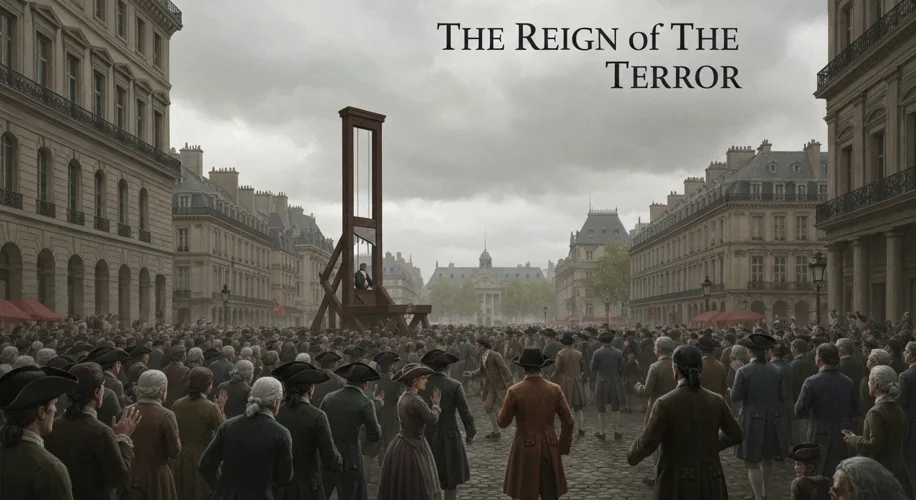The year is 1793. The French Revolution, once a beacon of hope for liberty and equality, has plunged into a chilling abyss. The air in Paris, once filled with the cries of freedom, now hangs heavy with the scent of fear and the metallic tang of blood. This was the Reign of Terror, a period where suspicion became a death sentence and the guillotine, a stark symbol of a nation consumed by its own revolutionary fervor.
Months earlier, King Louis XVI had met his end on the Place de la Révolution. The monarchy was abolished, and France was declared a Republic. Yet, beneath the veneer of a new dawn, a storm was brewing. Internal dissent, external threats from European monarchies, and deep-seated paranoia began to warp the revolutionary ideals.
At the heart of this maelstrom stood the Committee of Public Safety, a body ostensibly tasked with defending the Republic but which soon morphed into an instrument of brutal repression. Figures like Maximilien Robespierre, a lawyer whose passionate oratory had once championed the rights of the common people, now wielded immense power. He, along with his allies, became convinced that only through an uncompromising purge of “enemies of the revolution” could France be saved.

The Law of Suspects, passed in September 1793, cast a wide net. Anyone who “by their conduct, their associations, their words, or their writings” showed themselves to be a supporter of tyranny or an enemy of liberty was liable for arrest. This vague decree opened the floodgates to an era of denunciation. Neighbors accused neighbors, former friends turned on each other, and even minor infractions could lead to a swift trial before the Revolutionary Tribunal, a court notorious for its swift and often predetermined verdicts.
The September Massacres of 1792, a precursor to the Terror, offered a grim foreshadowing. In a frenzy of fear and retribution, mobs stormed prisons and slaughtered thousands of inmates, including priests and nobles, who were perceived as threats to the Revolution. This violent outpouring of mob justice, though not directly orchestrated by the Committee, set a precedent for the state-sanctioned violence that would follow.
The victims of the Terror were not just aristocrats. Clergy, nobles, moderate revolutionaries, and ordinary citizens alike found themselves swept up in the wave of executions. Marie Antoinette, the former queen, met her fate in October 1793, accused of treason and bankrupting the nation. Georges Danton, a prominent revolutionary leader who had once championed the Terror, eventually fell victim to it himself, executed in April 1794 after clashing with Robespierre.
The machinery of death operated with chilling efficiency. Paris became a city of tribunals and tumbrels, the carts that carried the condemned to the guillotine. Public executions were common, serving as grim spectacles intended to terrorize any potential opposition. The very ideals of justice and due process were sacrificed on the altar of revolutionary purity.
The Terror finally began to wane in the summer of 1794. The excesses and the constant fear of being targeted turned even many revolutionaries against Robespierre. Fearing for their own lives, members of the National Convention turned on him, leading to his arrest and execution on July 28, 1794 (10 Thermidor Year II). This event marked the end of the most intense phase of the Terror, ushering in a period known as the Thermidorian Reaction, which saw a rollback of the most radical policies and a crackdown on the Jacobins who had orchestrated the Terror.
The Reign of Terror left an indelible scar on the French Revolution. While it may have consolidated the Republic against its internal and external enemies, it did so at a horrific cost. It demonstrated the dangerous potential of unchecked revolutionary zeal and the fragility of liberty when overridden by fear and suspicion. The question of whether the Terror was a necessary evil to save the Revolution or a betrayal of its foundational principles continues to be debated by historians to this day, a testament to the complex and often brutal legacy of this tumultuous period in French history.

